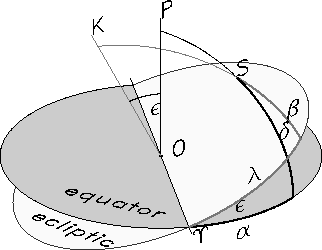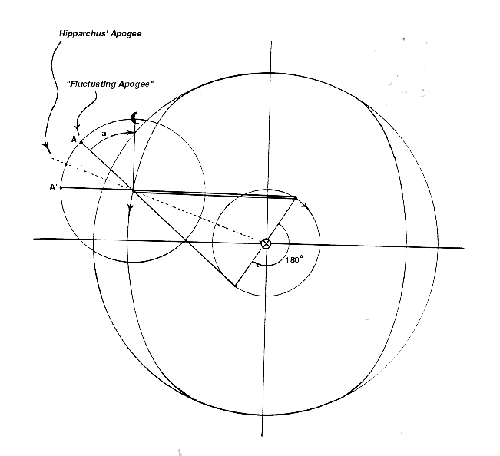
We have not defined Vipata Kendra,
The Vipata Anomaly,
Vi means without
Patha means Node
Vipata Anomaly means Angle
Between Position and Node.
This is the Second Correction,
Position reduced to Ecliptic.
Manda Anomaly means Angle
Between Position and Aphelion
Sheeghra Anomaly means Angle
Between Position and Sun
By Position we mean
The Position of the Planet.
Of the Fourteen Kendras plotted
The First One deals with the Annual Equation
Moon accelerates during July
And decelerates during Jan !
First Kendra Sin ( Mr + 180 ) * 658
The Second dealt with Equation Parallactic
Sunís perturbing action on Luna
Creates inequalities in her motion
Second Kendra Sin ( Lc - Lr ) * 121

The Third dealt with Evection,
Moonís largest perturbation,
Moon seems to be carried away
By the Sunís celestial pull !
Third Kendra Sin ( 2*T - Mc ) * 4467
The Fourth deals with The Variation
Moon accelerates at 0 and 180
And decelerates at 90 and 270
Fourth Kendra Sin ( 2*T + 6 Signs ) * 2145